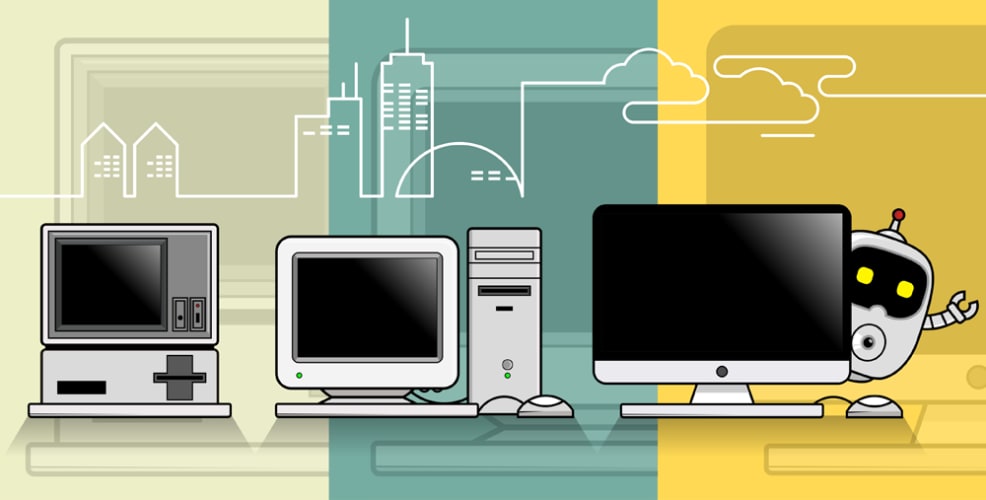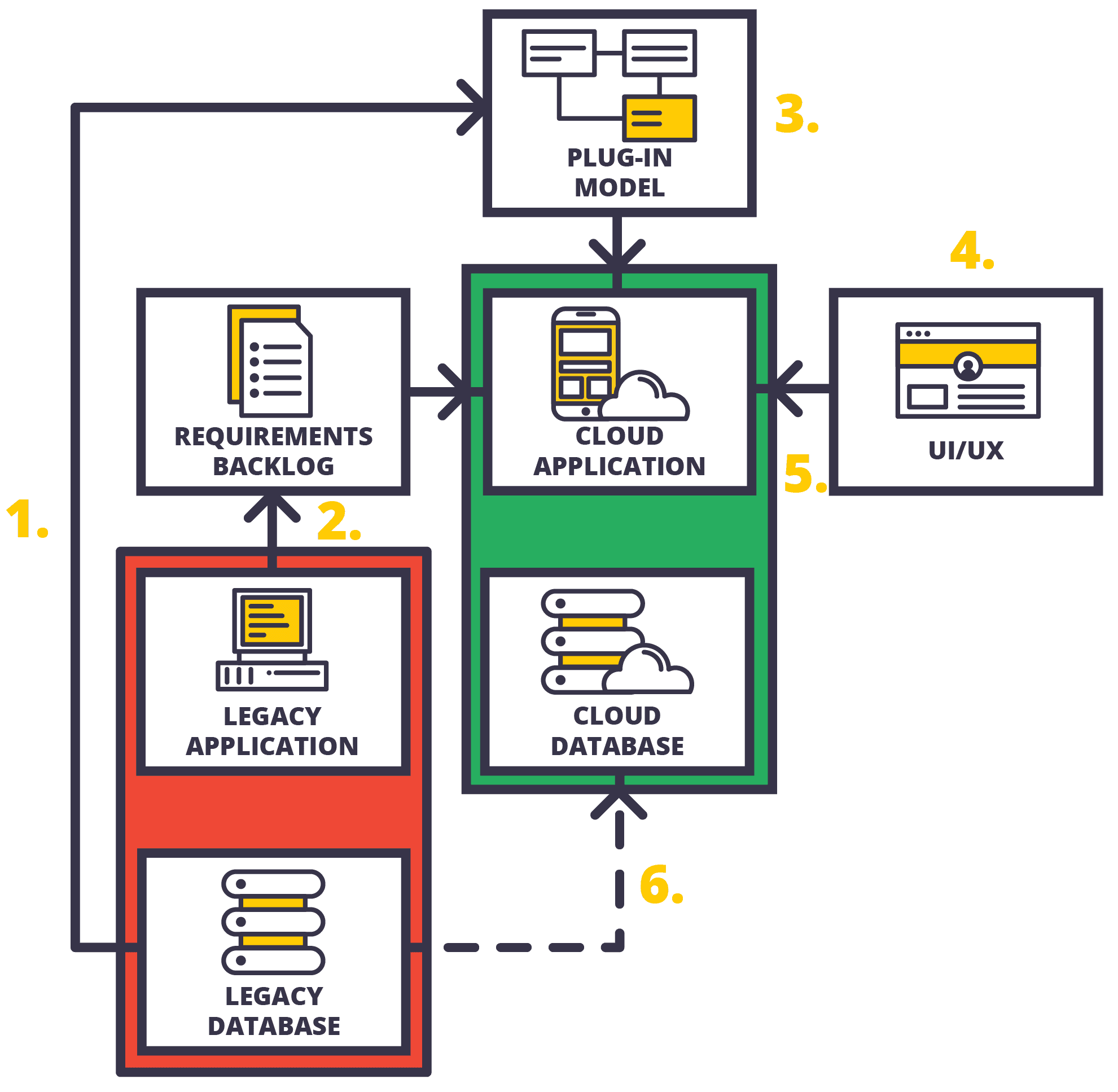
Data Migration: Preparing Your Business for the Future
Technology has revolutionised society and changed the way we live. According to the Australian Bureau of Statistics, 91% of households with internet access have a computer or laptop. Despite the pivotal role these devices play in our lives, many computer owners do not fully understand the history of computing or how it has evolved. Understanding this history can help us navigate the next steps in the evolution of technology.
After the Second World War, much of the technology developed for warfare became redundant. However, some opportunists recognised that there could be commercial applications for this technology. One important concept to understand is that the 'computer age' is really a series of computer ages. Simply put, the computer wasn’t just invented one day; rather, there was a process of reinvention and redefinition that led to the modern computer. Various countries were developing technology that would eventually form the basis of the computer, but they were at different stages and creating technology for different commercial purposes.
The Race Is On
In the United States, Eckert & Mauchly developed the UNIVAC, a device that simplified the punched card system, which was primarily used for processing and recording information (e.g., sales records, equipment). The UNIVAC could automate this process, saving businesses money on wages, though this was somewhat offset by the fact that the UNIVAC was a large and expensive machine to build at the time. In Britain, the catering firm J. Lyons & Company had installed a commercial computer before the UNIVAC was used for commercial purposes in America. Japan was initially slow to develop vacuum tube computers; however, by the 1980s, they managed to gain a foothold in the market by revolutionising integrated circuit production.
IBM Dominates
Although many companies were exploring and harnessing this technology, IBM is widely regarded as the leader of the pack. A major development occurred in 1956 when IBM introduced the world’s first computer hard disk drive, the IBM 305 RAMAC. However, it could not yet be mass-produced; the 305 RAMAC was enormous, larger than a refrigerator and weighed more than a ton. While it wasn’t a household item at the time, IBM sold these computers to governments and corporations. In 1981, IBM released the IBM Personal Computer 5150, which was a significant milestone. Although computers did not become widespread until the 1990s, IBM was able to offer a personal computer for home use.
The invention of the computer is often considered the catalyst for what many regard as the third industrial revolution. This revolution was centred around electronics, IT, and automated production, and it redefined the way we work and live.
Data Migration
Fast forward to present day, and we now have devices that are incredibly fast, lightweight, and capable of running advanced software. Responsible for the third industrial revolution, computers are also poised to play a significant role in the next industrial revolution. Many tech experts believe we are in the midst of a fourth industrial revolution, centred around cyber-physical systems and artificial intelligence. It is expected that this new revolution will encompass a wide array of devices, not just computers. However, computers will continue to be important.
Currently, many companies are choosing to migrate to cloud computing. As of 2024, 94% of companies use cloud computing. Without cloud storage, data is stored natively, i.e., separately on each computer. Data migration is the process of transferring legacy software and data to a new system, facilitating the transition to the cloud. As we enter the fourth industrial revolution, it will be crucial for smart devices to access information hosted in cloud storage. Therefore, for a business to fully leverage the upcoming technology and smart devices, migrating to the cloud is essential. The key to achieving this while retaining all your current data? Data migration
The Data Migration Process
Successful data migration follows a structured process designed to minimise risks and disruptions. At WorkingMouse, we have identified a six-step process that systematically addresses the challenges of data migration:
- Automated Data Capture: Reverse engineering from the legacy database to a plugin model helps ensure a systematic path of data transfer.
- Business Analysis: Engaging business analysts to create a requirements backlog ensures that the behaviour of the new system is clearly defined before migration.
- Capabilities Analysis: Based on the backlog, organisations can determine which functions of the legacy system need to be maintained and which can be enhanced.
- User Interface Design: A modern, responsive user interface is designed to ensure the system meets the needs of both internal users and customers.
- Automation and Augmentation: Automated tools are used to generate much of the new cloud application, with developers adding any necessary customisations.
- Migration Execution: This final step involves migrating customers and data to the new platform. If planned correctly, this step can be fully automated except for very complex scenarios
Overcoming Challenges in Data Migration
While data migration offers many benefits, the process is not without its challenges. A survey found that 75% of businesses face problems during the migration process. These challenges range from technical issues like data loss or corruption to organisational challenges such as user resistance.
Here are some of the key obstacle's businesses face during data migration and tips for overcoming them:
User Buy-In: One of the biggest hurdles is getting employees and users on board with the new system. It is crucial to communicate early and often with stakeholders about the benefits of the migration, and to provide training to ease the transition.
- Complexity of Legacy Systems: Many legacy systems were built using outdated technology, making the migration process more complex. In these cases, it’s important to conduct a thorough domain analysis and involve experts familiar with both the old and new systems.
- Data Integrity: Ensuring that data is transferred without loss or corruption is vital to the success of the migration. Businesses can mitigate this risk by breaking the migration into smaller iterations or sprints, testing each one thoroughly before moving on.
- Cultural Resistance: Cultural challenges are often overlooked, but they can significantly impact the success of the migration. Engaging end users early and involving them in the process can help ease the cultural transition.
Software Migration
Every business in the software industry shares a common goal: to lead their field in innovation. Whether you're a large corporation facing complex hurdles or dealing with other business challenges, you will eventually encounter the task of software migration. This process involves moving your program or data from an older system to a newer, more efficient platform to minimise the need for reengineering.
Migrating software to cloud environments, including the transition from outdated legacy systems to modern cloud-based solutions like Software-as-a-Service (SaaS), comes with its own set of challenges, even for experienced professionals. Throughout this process, several hurdles can arise but finding the most suitable and effective approach can result in significant cost and time savings.
Key strategies for a successful migration include:
- Educate Early: Engage users and clients from the beginning. Ensure they understand the upcoming changes and are prepared for the transition to minimise disruption and gain their support.
- Refine: Avoid attempting a complete system overhaul in one go. Instead, break the migration into smaller phases or sprints. This refined approach allows for continuous feedback, problem-solving, and flexibility, making the process more manageable and less prone to major setbacks.
- Avoid Frustration: Focus on delivering a high-quality user experience. Prevent data loss and ensure that the new system integrates smoothly with existing data. Modern cloud systems are designed to migrate old data effectively, getting rid of fears of data loss or system failures.
-
Conduct Thorough Domain Analysis: Understand that migrating to a cloud-based system involves more than just transferring
existing knowledge. A comprehensive analysis of the new environment is necessary to maximise the potential benefits of the cloud, such as
improved user experience and enhanced features. Involve domain experts and users to refine the software and secure their buy-in.
Navigating a software migration involves addressing both technical and organisational challenges. Careful planning, involving stakeholders early, and adopting an iterative approach can significantly enhance the success of the migration. By preparing thoroughly and managing the process effectively, businesses can transition smoothly to new systems and leverage the advantages of cloud computing.
Types of Software Migration
Generally, there are two main types of software migration to consider: data migration and application migration. Data migration involves transferring data between computer systems or storage solutions, often to upgrade to a more modern option like cloud storage. In contrast, application migration involves moving software to a new technology stack, typically when a legacy system installed on local computers needs to be modernised and transitioned to the cloud.
Why would a corporation need software migration?
Corporate companies in the software industry will eventually face increased entropy in their software, making it difficult to use effectively. Whether the system is running too slowly, or you aim to enhance the user experience, updating your legacy system to a more efficient solution, like cloud computing, is essential for staying competitive.
Once you transition to the cloud, your technology becomes scalable, offering your business opportunities for growth and innovation it's crucial to keep your technology competitive by using the most efficient and user-friendly platform. Selecting the right software migration process is a key decision in maintaining a high level of innovation for your business.

It's crucial to keep your technology competitive by using the most efficient and user-friendly platform. Selecting the right software migration process is a key decision in maintaining a high level of innovation for your business.
The Role of Data Migration in the Fourth Industrial Revolution
We are currently experiencing what many believe to be the fourth industrial revolution, driven by cyber-physical systems and artificial intelligence. For businesses to remain competitive in this new era, migrating data to the cloud is essential. Cloud-based platforms enable businesses to utilise the latest technologies, such as machine learning algorithms, to process and analyse data more efficiently.
As smart devices become more integrated into business operations, having access to cloud-based data will become even more critical. Data migration is a foundational step in preparing businesses for the next wave of technological advancements.
Conclusion
Data migration is a crucial process for any business looking to modernise its operations and take advantage of the latest technological developments. Whether you are a startup looking to scale or a corporate needing to update a legacy system, a structured approach to data migration will help ensure a smooth and successful transition.
At WorkingMouse, we have developed a systematic, six-step process that can help minimise the risks associated with data migration and ensure your business is ready for the future. With the right strategy in place, businesses can migrate to the cloud, improve operational efficiency, and position themselves for long-term success.
Embrace the change—start your data migration journey today.




.png)











